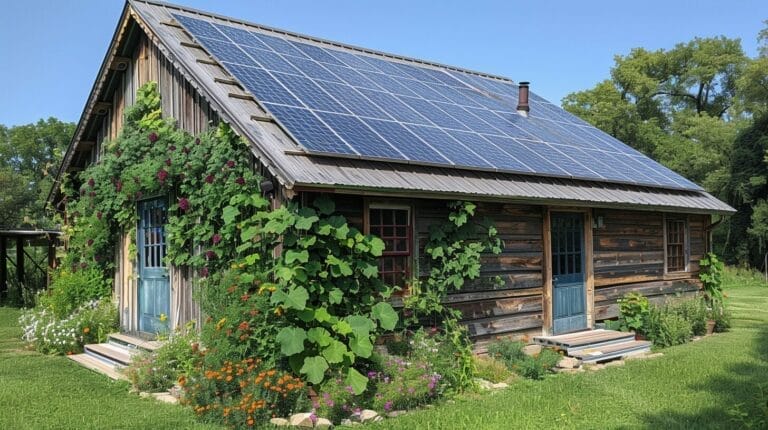How to Check a Pressure Switch on a Furnace: Easy Steps
When we’re dealing with furnace issues, it’s crucial to make sure the pressure switch is functioning correctly. This small but essential component can cause significant problems if it fails. First, we’ll need to locate the pressure switch, typically found near the draft inducer motor. Before we get our hands dirty, we must confirm safe access to the furnace.
Once we’ve done that, we can proceed with a preliminary draft test to check airflow using a draft gauge. But what do we do if we find inconsistencies or suspect blockages? Let’s explore the next steps together.
Key Takeaways
- Turn off furnace power for safety before starting any checks.
- Locate the pressure switch near the draft inducer motor by its round or oval shape.
- Use a multimeter to test for continuity or an open circuit based on furnace status.
- Employ a manometer to measure air pressure in the draft inducer motor.
- Interpret readings to determine if the pressure switch is functioning correctly.
Understanding the Role of Pressure Switches in Your Furnace

The pressure switch in a furnace ensures that the system operates safely and efficiently. This component monitors the pressure levels within the furnace, acting as a safeguard to halt the operation if it detects unsafe conditions, such as a blocked vent or a malfunctioning inducer motor.
Understanding the role of the pressure switch helps us appreciate its critical function. If a furnace isn’t working correctly, the pressure switch might be at fault, with issues ranging from a simple blockage in the air intake to more complex electrical failures.
Identifying the Pressure Switch in Your Furnace

To inspect the pressure switch properly, we need to first locate it. Found near the draft inducer motor, the pressure switch is a small, disc-shaped component that verifies the gas valve only opens when there’s adequate airflow.
To locate it, turn off the power to the furnace by switching off the circuit breaker or unplugging it. Remove the furnace’s access panel and look for a small, round or oval-shaped device with several wires connected to it, typically mounted on the side or near the draft inducer motor.
Conducting a Preliminary Draft Test for Your Furnace

A preliminary draft test helps determine if the airflow within the furnace is correctly maintained, which is crucial for the pressure switch to function. For this test, you’ll need a draft gauge and your furnace manual for reference.
After locating the vent pipe, place the draft gauge at the vent opening with the furnace running and observe the gauge readings. Consistent readings indicate proper airflow, while erratic numbers might signal an issue. If the readings are within the manufacturer’s specified range, the airflow is fine, and the focus can shift to the pressure switch itself. If not, potential blockages or issues with the venting system may need to be addressed.
Testing Your Furnace Pressure Switch

Before testing the pressure switch, ensure all necessary safety precautions have been taken. With the furnace turned off and the power supply disconnected, locate the pressure switch.
Using a multimeter set to measure resistance (ohms), disconnect the wires attached to the pressure switch terminals and place the multimeter probes on the terminals. A properly functioning pressure switch should show either a continuous (closed) circuit when the furnace is off or an open circuit when the furnace is on. If the multimeter reading doesn’t match these conditions, the switch might be faulty.
How to Replace a Faulty Furnace Pressure Switch

If your furnace frequently shuts down or fails to start despite passing the initial checks, it’s likely the pressure switch is faulty. To replace it, turn off the power to the furnace for safety, then locate the pressure switch.
Carefully disconnect the wires and hoses attached to the old switch, noting their positions for easy reattachment. Remove the faulty switch by unscrewing its mounting screws, install the new switch, and reconnect the wires and hoses. Double-check everything is properly connected before restoring power to the furnace.
Conclusion
To sum up, checking a pressure switch on a furnace is essential for ensuring safe and efficient operation. By understanding its role, identifying the switch, and conducting a preliminary draft test, we can diagnose potential issues.
If the switch is faulty, replacing it’s straightforward and keeps our furnace running smoothly. Let’s remember, regular maintenance helps prevent problems and keeps our home warm and safe throughout the colder months.
Frequently Asked Questions
What is a pressure switch on a furnace?
A pressure switch on a furnace is a safety device that senses the negative pressure created by the draft inducer fan during the combustion process.
How does a pressure switch work?
The pressure switch senses the pressure at the draft inducer fan and ensures that the furnace has proper venting pressure at the condensate collector to prevent damage and ensure safe operation.
Why is it important to check the pressure switch on a furnace?
Checking the pressure switch is crucial as a malfunctioning switch can cause the furnace to still operate even when there are issues with venting or combustion, leading to potential safety hazards.
How can I troubleshoot a pressure switch on a furnace?
To troubleshoot a pressure switch, you can check for clogs in the hose leading to the switch, verify proper voltage supply, and ensure the switch has not failed by testing it with a multimeter.
What are some common signs that indicate a pressure switch has failed?
Common signs of a failed pressure switch include furnace malfunctions, a constant need for resetting the thermostat, or the blower fan running continuously.







